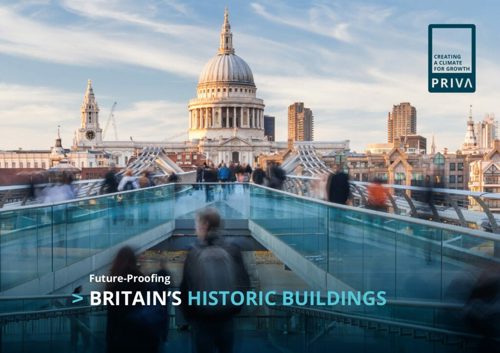By undertaking comprehensive improvements – which can range from eliminating draught problems associated with old windows to installing new heating, lighting and control systems – it’s possible both to lower emissions and extend the life of an older building. It also avoids the carbon emissions associated with demolishing an old building and constructing a new one.
If a comprehensive plan to retrofit the UK’s historic properties was implemented, carbon emissions from the overall building stock could be reduced by about 5% each year. But as the report goes on to suggest, there is also bound to be a huge uplift in job creation and economic output.
If the UK is to meet its 2050 Net Zero target, the report indicates, more than 105,000 new workers – including plumbers, electricians, carpenters and scaffolders – will be required to work solely on decarbonising historic buildings every year for the next three decades. Regrettably, this could prove to be one of the most challenging requirements as even sourcing the necessary workers will be problematic; the report highlights a skills shortage that has worsened in recent years due to Covid-19, Brexit and an ageing workforce.
Calling for the urgent creation of a “national retrofit strategy”, the document also stresses the importance of more extensive collaboration between stakeholders on a local and regional level.
Focus on future-proofing
For Priva, these conclusions are music to the ears. As well as supporting initiatives like the CIBSE committee, Priva has repeatedly stressed the importance of retrofitting. For instance, the deployment in heritage properties of the kind of modern building management systems (BMS) frequently encountered in new developments can enable owners to gather extensive data on energy consumption – and identify areas where it can be reduced. And by providing more rigorous control of indoor climate, a modern BMS can also help to improve the overall longevity of a heritage building.
A recent e-book published by Priva explores the advantages of retrofitting and shows how it has been applied – with the aid of Priva technologies – to a host of celebrated buildings, including Westminster Abbey, Marlborough College and Theatre Royal Bath.

Priva's Heritage e-Book is available here.
In each case, the skillful deployment of technology combined with close collaboration between stakeholders has helped lower energy costs and carbon emissions.
In the wake of the new report, we look forward to working with even more historic buildings to improve their energy efficiency and help them chart a course towards Net Zero.
Header image supplied by The National Centre for Writing - which benefits from Priva's control technologies.


















